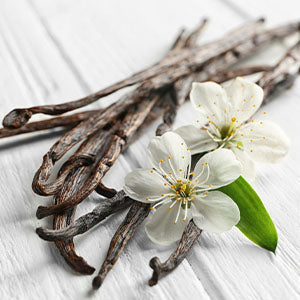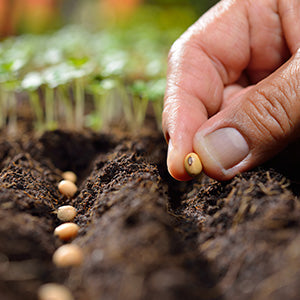How Wheatgrass Contributes to Nutrition and a Healthy Diet

Wheatgrass has gained considerable attention in recent years for its potential health benefits and nutritional value. Packed with essential vitamins, minerals, enzymes, and chlorophyll, this “superfood” is a popular addition to many health-conscious diets.
But what exactly makes wheatgrass so nutritious, and should you consider adding it to your wellness routine?
Let’s dive in.
What is Wheatgrass?
Wheatgrass is a sprout of the common wheat plant Triticum aestivum. It is harvested at a very early stage of growth before gluten has the opportunity to develop. At this point, the wheatgrass is vibrant green and bursting with nutrients.
Perhaps most noteworthy is the fact that chlorophyll, the compound that gives wheatgrass its green hue, accounts for about 70% of its nutritional profile. Consuming high amounts of chlorophyll has been shown to improve blood flow, fight oxidative stress, balance pH levels, clear out heavy metals, and support immune function[1].
The Nutritional Value of Wheatgrass Supplements
Every serving of wheatgrass has the nutritional value of five to nine servings of fruits and vegetables, with impressive amounts of the following [1]:
- Chlorophyll
- Calcium
- Iron
- Vitamins A, B, C, and E
- Amino acids
- Fiber
- Magnesium
- Potassium
Incorporating a wheatgrass supplement into your diet can be an effortless way to ensure your healthy diet contains the nutrients you need for optimal health, especially on days when you don’t consume many dark green, leafy vegetables or fresh fruits.
Supplementing Your Healthy Diet with Wheatgrass
Incorporating a wheatgrass supplement into your diet can be a simple way to get the nutrients you need for optimal health, especially on days when you don’t consume many dark green, leafy vegetables or fresh fruits. It can be as effortless as adding a scoop of wheatgrass powder to your smoothies, purified water, or juice.
Wheatgrass supplements are also available in capsule and juice form. A natural health or juice shop in your area may carry freshly juiced wheatgrass, which you can drink as-is or combine with nutritious beverages.
If you have an affinity for gardening, you may enjoy cultivating your own patch of wheatgrass at home. So long as you use organic products, grow under proper conditions, and harvest the sprouts when they’re around 7-10 days old, you’ll have quality wheatgrass ready for daily juicing.
While a wheatgrass supplement can be a valuable addition to your healthy routine, it should not be considered a substitute for a varied and balanced diet of whole fruits, vegetables, grains, and lean proteins.
Potential Side Effects of Wheatgrass
A single-ingredient wheatgrass supplement is safe for most people and isn’t known to cause serious side effects [2]. However, if you have a wheat or grass allergy, you may experience typical histamine reactions, like itchiness, hives, or swelling. If you have known allergies, be sure to consult a healthcare professional before trying wheatgrass.
It may also be a good idea to speak with your doctor about wheatgrass if you are pregnant, breastfeeding, or have any underlying health conditions. Their personalized advice will help you experience the benefits of wheatgrass without any adverse reactions.
How to Shop for Wheatgrass Supplements
You can find wheatgrass in loose powder form, fresh juice, and capsules – choose whichever aligns with your lifestyle and preferences. However, a few factors can make one wheatgrass supplement more nutritious than another. Here’s what you should consider before buying wheatgrass:
- Organically grown. Organic wheatgrass is free from synthetic pesticides, herbicides, and fertilizers, which can compromise its nutritional value.
- Purity. An ideal supplement will contain 100% pure wheatgrass without additives, fillers, or artificial ingredients.
- Quality. Research the supplement manufacturing facility to ensure it adheres to strict quality control standards to maintain product safety and integrity.
We make our Organic Wheatgrass supplement from organically grown NutraGrass™ sprouts harvested at peak vitality. We use a meticulous, heat-free process to preserve its nutritional properties, so you get the most out of every scoop, and our manufacturing process never involves potentially harmful chemicals. As a single-ingredient, certified organic supplement, our Organic Wheatgrass is the most pure and potent on the market.
References (2)
- Martins T, Barros AN, Rosa E, Antunes L. Enhancing Health Benefits through Chlorophylls and Chlorophyll-Rich Agro-Food: A Comprehensive Review. Molecules. 2023 Jul 11;28(14):5344. doi: 10.3390/molecules28145344. PMID: 37513218; PMCID: PMC10384064.
- Wheat grass. (2023, March 17). Memorial Sloan Kettering Cancer Center. https://www.mskcc.org/cancer-care/integrative-medicine/herbs/wheat-grass

Dr. Edward Group, DC
FOUNDER | HEALER | ADVOCATEDr. Group, DC is a healer and alternative health advocate, and an industry leader and innovator in the field of natural health who is dedicated to helping others. He is a registered doctor of chiropractic (DC), a naturopathic practitioner (NP), and proud alum of Harvard Business School and MIT Sloan School of Management. Dr. Group, DC is the founder of Global Healing – a mission and vision he has shared through best-selling books and frequent media appearances. He aims to spread his message of positivity, hope, and wellness throughout the world.










